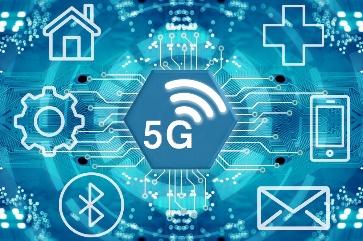
5G (Fifth Generation) wireless technology is the latest cellular network technology, offering faster data speeds, lower latency, and greater connectivity than its predecessors (4G, 3G, and 2G).
It is designed to support a wide range of use cases, including enhanced mobile broadband (eMBB), ultra-reliable low-latency communication (URLLC), and massive machine-type communications (mMTC).













Key Features of 5G Networks
Speed: 5G offers theoretical download speeds of up to 20 Gbps and upload speeds of up to 1Gbps.
Latency: 5G reduces latency to as low as 1 ms, making it suitable for real-time applications such as online gaming and augmented reality.
Capacity: 5G can support a massive number of devices, making it ideal for IoT (Internet of Things) applications.
Reliability: 5G offers ultra-reliable low-latency communication (URLLC) for mission-critical applications.
Edge Computing: 5G enables edge computing, which reduces latency by processing data closer to the user.
Use Cases for 5G Networks
Enhanced Mobile Broadband (eMBB): 5G is designed to provide faster data speeds for mobile devices, making it suitable for applications such as online streaming, mobile gaming, and social media.
Ultra-Reliable Low-Latency Communication (URLLC): 5G offers ultra-reliable low-latency communication (URLLC) for mission-critical applications such as autonomous vehicles, smart cities, and industrial automation.
Massive Machine-Type Communications (mMTC): 5G is designed to support a large number of devices, making it suitable for IoT applications such as smart homes, cities, and industrial automation.
Remote Healthcare: 5G enables remote healthcare applications such as telemedicine, remote surgery, and patient monitoring.
Smart Cities: 5G can support smart city applications such as smart lighting, traffic management, and public safety.
Benefits of 5G Networks
Improved User Experience: 5G offers faster data speeds, lower latency, and greater connectivity, making it a better experience for users.
Increased Productivity: 5G can support remote work, online education, and other applications that require high-speed internet connectivity.
Job Creation: 5G can create new job opportunities in areas such as network design, deployment, and management.
Economic Growth: 5G can drive economic growth by enabling new industries and applications.
Improved Public Safety: 5G can support public safety applications such as emergency services and disaster response.
Challenges and Limitations of 5G Networks
High Cost: 5G deployment requires significant investment in infrastructure and equipment.
Security: 5G networks are more vulnerable to security threats due to the increased number of devices and connections.
Interoperability: 5G devices from different manufacturers may not be compatible with each other.
Regulatory Framework: Governments and regulatory bodies are still developing the framework for 5G deployment.
Scalability: 5G networks may face scalability challenges due to the increasing number of devices and connections.
Conclusion
5G networks offer a wide range of benefits, including faster data speeds, lower latency, and greater connectivity. They support a variety of use cases, including enhanced mobile broadband, ultra-reliable low-latency communication, and massive machine-type communications. However, 5G deployment also comes with challenges and limitations, including high costs, security concerns, interoperability issues, regulatory framework challenges, and scalability concerns.


Leave a Reply